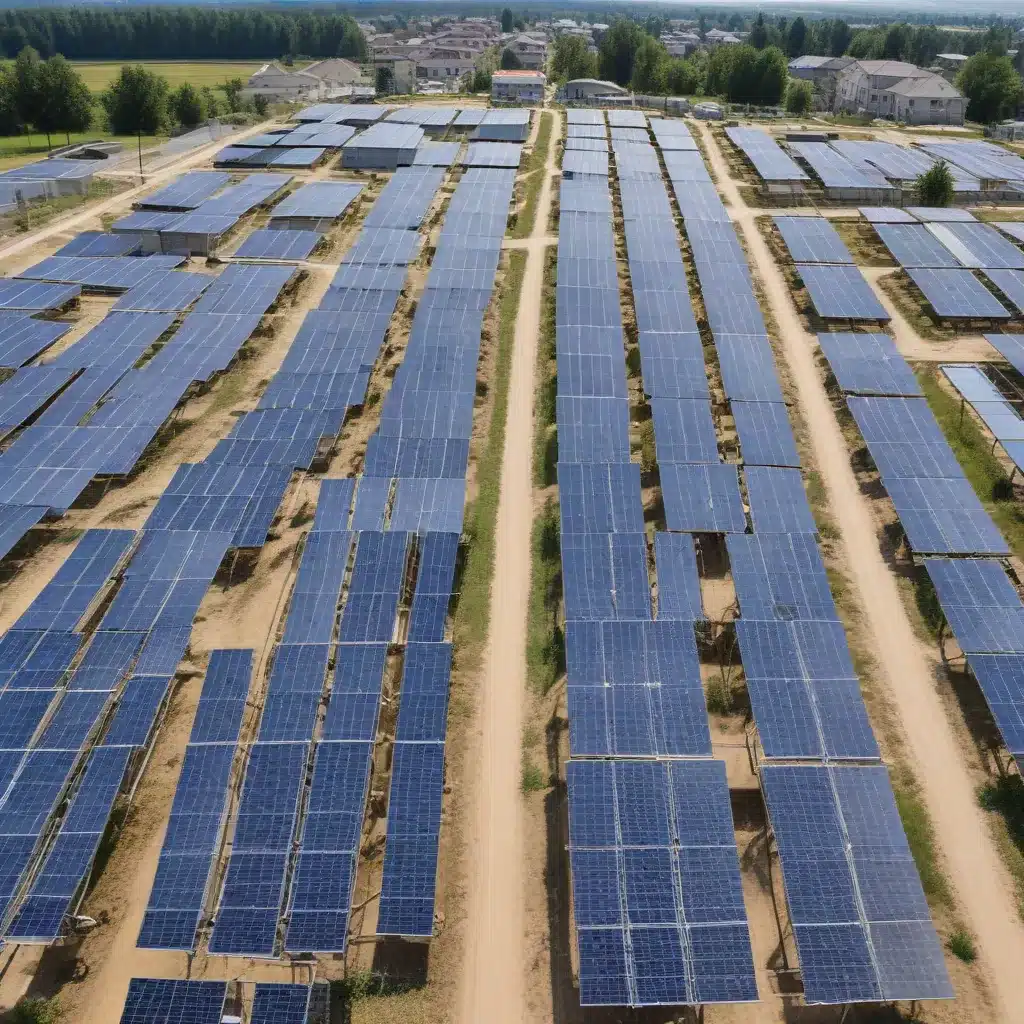
As Europe accelerates its transition to clean energy, ensuring grid resilience has become a paramount concern. Traditional power grids, designed for centralized generation and one-way power flows, are increasingly ill-equipped to handle the challenges posed by more frequent and severe weather events, the intermittency of renewable sources, and the growing demand for reliable electricity.
However, a new paradigm is emerging that holds the key to a more resilient and flexible energy future: the integration of microgrids and virtual power plants (VPPs). These innovative technologies are transforming the way we generate, distribute, and manage electricity, offering a versatile and adaptable solution to the pressing issues facing Europe’s energy infrastructure.
Understanding Grid Vulnerabilities
The impacts of climate change are becoming increasingly apparent, with extreme weather events, such as storms, heatwaves, and flooding, disrupting power supplies across the continent. These natural disasters can wreak havoc on traditional power grids, damaging critical infrastructure and leaving communities without access to essential services for extended periods.
Moreover, the rapid growth of renewable energy sources, while crucial for decarbonization, has introduced new challenges for grid operators. The intermittency and variability of wind and solar power can strain the grid, leading to imbalances between supply and demand and increasing the risk of blackouts.
Improving Grid Reliability
To address these vulnerabilities, grid operators and policymakers are turning to innovative technologies that can enhance the resilience and reliability of the energy system. Microgrids and virtual power plants have emerged as transformative solutions, offering a paradigm shift in how we generate, distribute, and manage electricity.
Microgrids: A Resilience Solution
Microgrids are self-contained, localized energy systems that can operate independently from the main grid. They typically combine various distributed energy resources (DERs), such as solar panels, wind turbines, energy storage systems, and backup generators, to provide reliable and resilient power to a specific area or community.
Microgrid Functionality
Microgrids are designed to seamlessly transition between grid-connected and island mode, ensuring that critical loads are continuously powered even in the event of a grid outage. Their modular and decentralized nature makes them less vulnerable to the cascading effects of a single point of failure, enhancing the overall resilience of the energy system.
Microgrid Integration
Integrating microgrids into the larger energy infrastructure can provide significant benefits. By collaborating with utility companies and grid operators, microgrids can support the main grid during periods of high demand or supply fluctuations, contributing to improved grid stability and reliability.
Microgrid Use Cases
Microgrids have found widespread application across diverse settings, from remote communities and military installations to urban centers and critical infrastructure facilities. Their ability to provide reliable and resilient power has made them an invaluable asset in areas prone to natural disasters or grid instability.
Virtual Power Plants: Enhancing Grid Flexibility
Complementing the resilience offered by microgrids, virtual power plants (VPPs) are revolutionizing the way we manage and optimize distributed energy resources. VPPs are software-enabled platforms that aggregate and coordinate the operation of multiple DERs, effectively creating a “virtual” power plant that can be dispatched and controlled as a single entity.
VPP Concept and Architecture
VPPs leverage advanced control systems, data analytics, and artificial intelligence to orchestrate the seamless integration of various DERs, including renewable energy sources, energy storage systems, and flexible loads. By optimizing the performance of these distributed assets, VPPs can provide a range of services to the grid, such as frequency regulation, voltage support, and peak shaving.
VPP Benefits for Grid Resilience
The flexibility and responsiveness of VPPs make them a powerful tool for enhancing grid resilience. During periods of grid stress or disruption, VPPs can quickly mobilize their network of DERs to provide emergency power, alleviate congestion, and support grid restoration efforts.
VPP Deployment Strategies
Across Europe, utilities and energy companies are actively deploying VPPs to leverage the benefits of distributed energy resources. By partnering with DER owners and aggregators, these organizations are creating dynamic, data-driven platforms that can adapt to changing grid conditions and unlock new revenue streams for DER participants.
Combining Microgrids and Virtual Power Plants
While microgrids and VPPs are distinct concepts, their synergistic integration can unlock even greater potential for enhancing grid resilience and flexibility. By combining these technologies, energy stakeholders can create a robust and adaptive energy ecosystem that is better equipped to withstand the challenges of the clean energy transition.
Integrated Microgrid-VPP Systems
Integrating microgrids and VPPs can create a powerful hybrid solution. Microgrids can serve as the foundational infrastructure, providing reliable and resilient power to local communities, while VPPs can orchestrate the coordination and optimization of the microgrid’s DERs to support the broader grid.
Coordinated Operations and Control
Advanced control systems and data analytics platforms are essential for seamlessly integrating microgrids and VPPs. By leveraging artificial intelligence and machine learning, these systems can optimize the performance of the combined microgrid-VPP infrastructure, responding to real-time grid conditions and market signals to deliver maximum value.
Optimizing Grid Support Services
The combination of microgrids and VPPs can unlock a suite of grid support services that enhance overall system resilience. These include frequency regulation, voltage support, reactive power compensation, and peak demand management—all of which can be dynamically managed and dispatched to maintain grid stability and reliability.
As Europe continues to navigate the challenges of the clean energy transition, the integration of microgrids and virtual power plants has emerged as a pivotal strategy for enhancing grid resilience. By leveraging these innovative technologies, energy stakeholders can create a more flexible, adaptable, and reliable energy infrastructure that is better equipped to withstand the threats of climate change and the intermittency of renewable energy sources.
Through strategic investments, supportive policies, and collaborative efforts, Europe can harness the power of microgrids and virtual power plants to secure a resilient and sustainable energy future for all. To learn more, visit the European Future Energy Forum.







